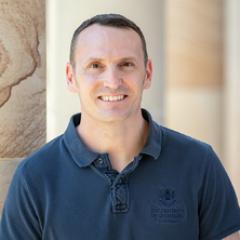The major focus of our lab is development of the placenta; a highly specialized organ of pregnancy that facilitates the exchange of nutrients and waste between a mother and her developing fetus (or fetuses if you happen to be a mouse). Abnormalities in placentation can result in a range of serious pregnancy complications such as pre-eclampsia and intrauterine growth restriction (IUGR).
Our lab uses transgenic mouse lines, trophoblast stem cell cultures, and other molecular biology tools to study placental development and early implantation in mice.
More specifically, the lab has an interest in the differentiation and function of trophoblast cells, the cell type that makes up the majority of the mature placenta. Trophoblast cells are a diverse bunch, with distinct subtypes having unique cell biology and roles within the placenta; some trophoblast cells are multinucleated as a result a cell-cell fusion (syncytiotrophoblast), some are invasive (glycogen trophoblast cells), while others become enormous polyploid cells due to an unusual cell cycle called endoreduplication. Collectively, we are interested in how these different trophoblast subtypes differentiate from stem cells and how they interact to form a functional placenta.
Along with placental development, the lab also has an interest in the initiation of embryo implantation. We aim to understand more about the uterine environment into which embryos implant and how changes to this environment are regulated and affect fertility.
- Rakoczy, Joanna, Zhang, Zhe, Bowling, Francis Gerard, Dawson, Paul Anthony and Simmons, David Gordon (2015) Loss of the sulfate transporter Slc13a4 in placenta causes severe fetal abnormalities and death in mice. Cell Research, 25 11: 1273-1276. doi:10.1038/cr.2015.100
- Outhwaite, J. E., McGuire, V. and Simmons, D. G. (2015) Genetic ablation of placental sinusoidal trophoblast giant cells causes fetal growth restriction and embryonic lethality. Placenta, 36 8: 951-955. doi:10.1016/j.placenta.2015.05.013
- Outhwaite, J. E., Natale, B. V., Natale, D. R. C. and Simmons, D. G. (2015) Expression of aldehyde dehydrogenase family 1, member A3 in glycogen trophoblast cells of the murine placenta. Placenta, 36 3: 304-311. doi:10.1016/j.placenta.2014.12.002
- Simmons, David G. (2014). Postimplantation development of the chorioallantoic placenta. In B. Anne Croy, Aureo T. Yamada, Francesco J. DeMayoand S. Lee Adamson (Ed.), The Guide to Investigation of Mouse Pregnancy (pp. 143-162) London, UK: Academic Press. doi:10.1016/B978-0-12-394445-0.00012-6
- Hu, Dong, Scott, Ian C., Snider, Fran, Geary-Joo, Colleen, Zhao, Xiang, Simmons, David G. and Cross, James C. (2013) The basic helix-loop-helix transcription factor Hand1 regulates mouse development as a homodimer. Developmental Biology, 382 2: 470-481. doi:10.1016/j.ydbio.2013.07.025
- Hughes, M., Natale, B. V., Simmons, D. G. and Natale, D. R. C. (2013) Ly6e expression is restricted to syncytiotrophoblast cells of the mouse placenta. Placenta, 34 9: 831-835. doi:10.1016/j.placenta.2013.05.011
- Simmons, D. G., Rakoczy, J., Jefferis, J., Lourie, R., McIntyre, H. D. and Dawson, P. A. (2013) Human placental sulfate transporter mRNA profiling from term pregnancies identifies abundant SLC13A4 in syncytiotrophoblasts and SLC26A2 in cytotrophoblasts. Placenta, 34 4: 381-384. doi:10.1016/j.placenta.2013.01.017
- Jefferis, J., Rakoczy, J., Simmons, D. G. and Dawson, P. A. (2013) Molecular analysis of the human SLC13A4 sulfate transporter gene promoter. Biochemical and Biophysical Research Communications, 433 1: 79-83. doi:10.1016/j.bbrc.2013.02.061
- Dawson, Paul A., Rakoczy, Joanna and Simmons, David G. (2012) Placental, renal, and ileal sulfate transporter gene expression in mouse gestation. Biology of Reproduction, 87 2: 43.1-43.9. doi:10.1095/biolreprod.111.098749
- Dawson, Paul A., Sim, Pearl, Simmons, David G. and Markovich, Daniel (2011) Fetal loss and hyposulfataemia in pregnant NaS1 transporter null mice. Journal of Reproduction and Development, 57 4: 444-449. doi:10.1262/jrd.10-173K
- Simmons, David G., Natale, David R. C., Begay, Valerie, Hughes, Martha, Leutz, Achim and Cross, James C. (2008) Early patterning of the chorion leads to the trilaminar trophoblast cell structure in the placental labyrinth. Development, 135 12: 2083-2091. doi:10.1242/dev.020099
- Simmons, David G., Rawn, Saara, Davies, Alastair, Hughes, Martha and Cross, James C. (2008) Spatial and temporal expression of the 23 murine Prolactin/Placental Lactogen-related genes is not associated with their position in the locus. BMC Genomics, 9 9: 1-20. doi:10.1186/1471-2164-9-352
- Simmons, David G., Fortier, Amanda L. and Cross, James C. (2007) Diverse subtypes and developmental origins of trophoblast giant cells in the mouse placenta. Developmental Biology, 304 2: 567-578. doi:10.1016/j.ydbio.2007.01.009
- Simmons, David G. and Cross, James C. (2005) Determinants of trophoblast lineage and cell subtype specification in the mouse placenta. Developmental Biology, 284 1: 12-24. doi:10.1016/j.ydbio.2005.05.010
Honours
1. The role of histone variants and chromatin remodeling in preparing the endometrium for embryo implantation and early placental development
2. Characterization the placental phenotype of Ly6e-/- mice
3. Investigating an unusual placental cell-type - sinusoidal trophoblast giant cells
PhD
1. The role of sulfate in maternal adaptations to pregnancy: brain development and mothering ability
Find out more about our diverse range of research interests.

